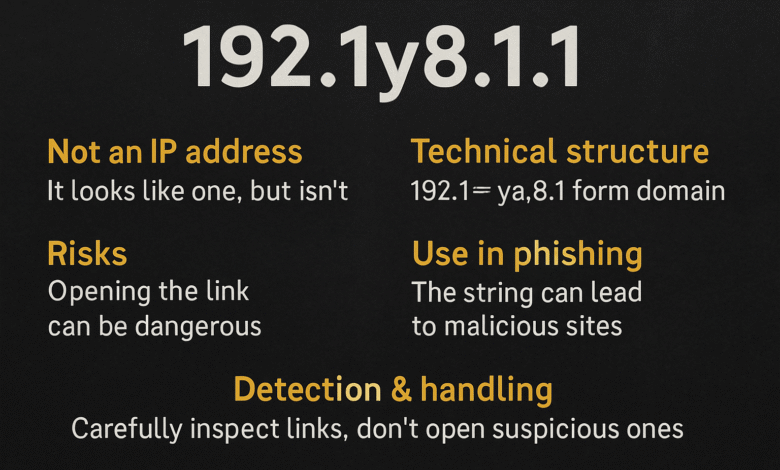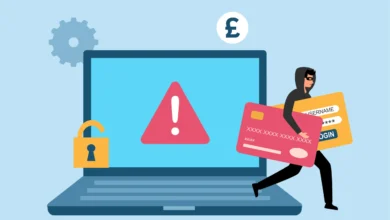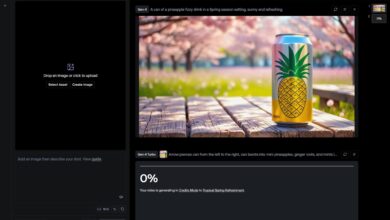Unmasking 192.1y8.1.1: A Deep Dive into the Unusual IP-like Format

Introduction
The string 192.1y8.1.1 may initially appear like a standard IP address, especially to the untrained eye. However, its unusual structure makes it stand out in the realm of networking and cybersecurity. Though it resembles a legitimate IP address, the presence of an alphabetic character disqualifies it from being valid under the IPv4 standard. This article explores the origins, risks, possible contexts, and technical implications of encountering such a malformed address.
What is 192.1y8.1.1?
The sequence 192.1y8.1.1 is misleading in appearance. While it mimics the format of an IPv4 address, it includes the invalid character ‘y’, making it non-compliant. A proper IPv4 address consists of four numerical segments ranging between 0 and 255, separated by periods. Therefore, this string is not recognized as a legitimate IP address in any formal networking system.
Common Reasons for the Existence of 192.1y8.1.1
There are several scenarios where malformed strings like 192.1y8.1.1 may appear:
-
Typographical Error: A common explanation is human error during manual configuration or documentation. A single misplaced character can turn a valid IP into a malformed one.
-
Placeholders in Code: Developers may use such a format in test environments or sample configurations as a fake address.
-
Obfuscation in Malicious Activity: Cyber attackers often use malformed addresses like 192.1y8.1.1 to bypass filters or avoid detection by automated systems.
-
Encoding or Data Transfer Issues: Errors during data handling across different platforms or systems may lead to corrupted or malformed addresses.
Technical Evaluation of 192.1y8.1.1
Here’s a comparative breakdown:
| Criteria | IPv4 Example | IPv6 Example | 192.1y8.1.1 |
|---|---|---|---|
| Valid Characters | Numeric only (0–255) | Hexadecimal + colons | Contains invalid ‘y’ |
| Format Structure | 4 octets | 8 groups separated by colons | 4 segments, one invalid |
| Usage Validity | Networking | Modern networking | Invalid/misleading |
| Max Length | 15 characters | 39 characters | 11 characters |
From the chart above, it is clear that 192.1y8.1.1 fails validation on multiple technical fronts.
Security Concerns Around 192.1y8.1.1
While 192.1y8.1.1 is not a real IP address, its use can be dangerous:
-
Phishing Attacks – Fake URLs like
http://192.1y8.1.1/loginmight look authentic at a glance and can trick users into providing sensitive information. -
Malicious Redirection – JavaScript or HTML elements using similar malformed URLs can redirect users to compromised websites.
-
DNS Spoofing – Attackers may insert such strings into local DNS configurations or hosts files to manipulate traffic flow.
-
Log Poisoning – Cybercriminals may inject false IPs like 192.1y8.1.1 into logs for obfuscation or distraction.
These tactics exploit trust in familiar formats and can cause significant security risks if not detected early.
Detecting and Preventing Use of 192.1y8.1.1
To avoid falling victim to suspicious or malformed inputs like 192.1y8.1.1, follow these best practices:
-
Input Validation – Ensure IP address inputs are checked against strict patterns using regex or specialized validators.
-
User Input Sanitization – Prevent injection attacks or data corruption by cleaning all inputs thoroughly.
-
Monitoring and Logging – Keep track of any unexpected or malformed IP-like entries for later analysis.
-
Educate End Users – End-users, especially in sensitive roles, should be trained to recognize fake IP addresses.
-
Report Suspicious Instances – If found in URLs, emails, or logs, report such occurrences to the IT security team.
Why Hackers Use Formats Like 192.1y8.1.1
Cybercriminals often rely on the average user’s lack of deep technical knowledge. Strings like 192.1y8.1.1 are designed to look familiar while remaining functionally deceptive. In mobile views or shortened browser address bars, such strings can easily pass as legitimate.
Some attackers even encode such addresses to confuse spam filters and trick parsing systems. What appears to be a typo could be a calculated method to launch a phishing or redirection campaign.
How Developers Should Handle 192.1y8.1.1
Software and web developers must be particularly cautious. If your applications accept or log user-submitted IP addresses:
-
Use strong regex validation to ensure only proper IPv4 or IPv6 formats are accepted.
-
Reject any input that includes alphabetic characters in what should be numeric fields.
-
Log any anomalies like 192.1y8.1.1 for manual inspection and pattern analysis.
-
Avoid executing or redirecting based on any suspicious user input.
These steps can minimize exposure to fake addresses and potential code injection.
When You Encounter 192.1y8.1.1 – What Should You Do?
If you find 192.1y8.1.1 in:
-
Logs: Flag and monitor the source system.
-
Emails or Links: Avoid clicking and report the email to your IT department.
-
Code or Documentation: Replace with a proper placeholder or correct the format.
-
Web Inputs: Ensure the front-end and back-end both validate and reject malformed IPs.
Ignoring such malformed data can lead to larger systemic issues and security breaches.
Conclusion
The string 192.1y8.1.1 may look like a harmless IP address at first, but it breaks every rule of valid IPv4 formatting. Its presence could mean a simple typo or indicate a more serious attempt at deception. With increasing phishing attacks and obfuscation tactics, recognizing and neutralizing such malformed inputs is a critical aspect of modern cybersecurity.
Whether you’re a developer, IT admin, or everyday user, understanding what 192.1y8.1.1 represents—and how to defend against misuse—is essential.
FAQs About 192.1y8.1.1
Q1: What is 192.1y8.1.1?
A: It’s a string that mimics an IP address format but includes the invalid character ‘y’, making it unusable as an actual IPv4 address.
Q2: Is 192.1y8.1.1 a valid IP address?
A: No, it’s invalid due to non-numeric characters. All segments in IPv4 must be numbers ranging from 0 to 255.
Q3: Why do hackers use 192.1y8.1.1 or similar strings?
A: They use such strings to trick users and systems by exploiting familiar formatting, often in phishing or redirection attacks.
Q4: What should I do if I see 192.1y8.1.1 in a URL or email?
A: Do not click on it. Report the link to your IT team or email provider and avoid interacting further.
Q5: How can I verify if an IP-like string is valid?
A: Use trusted IP validation tools or implement regex-based filtering to distinguish legitimate from malformed addresses.



